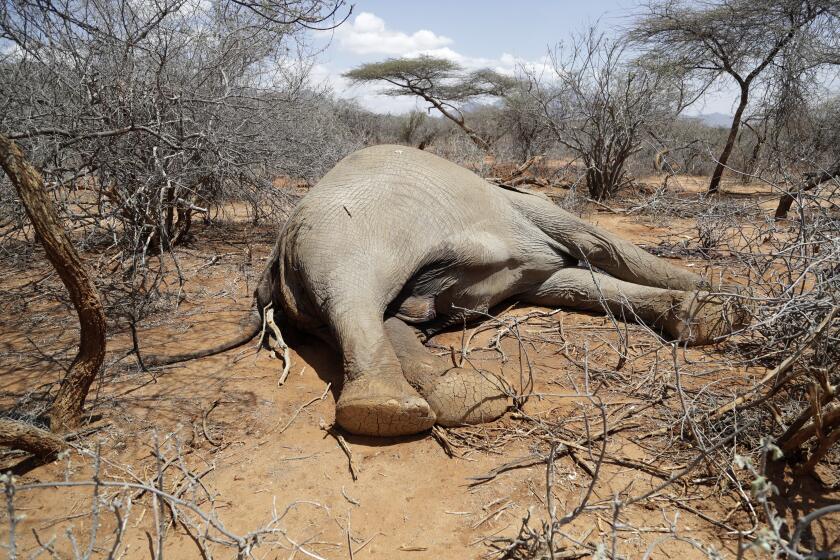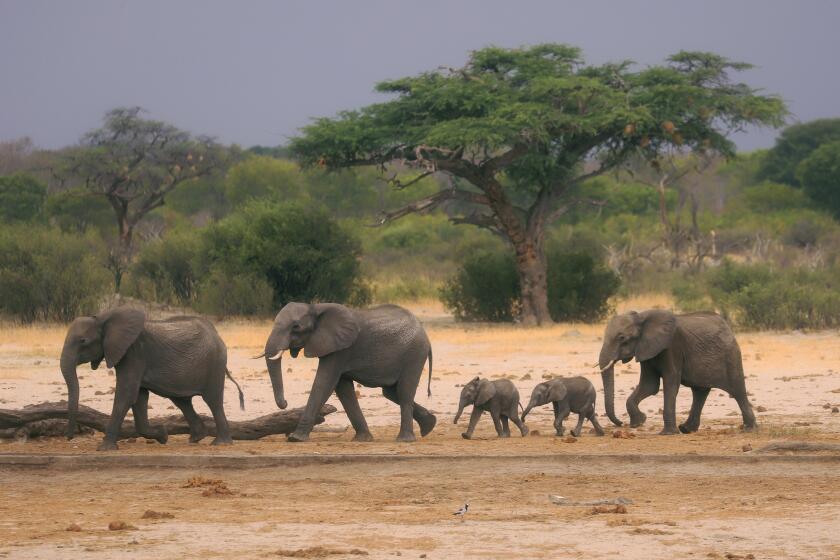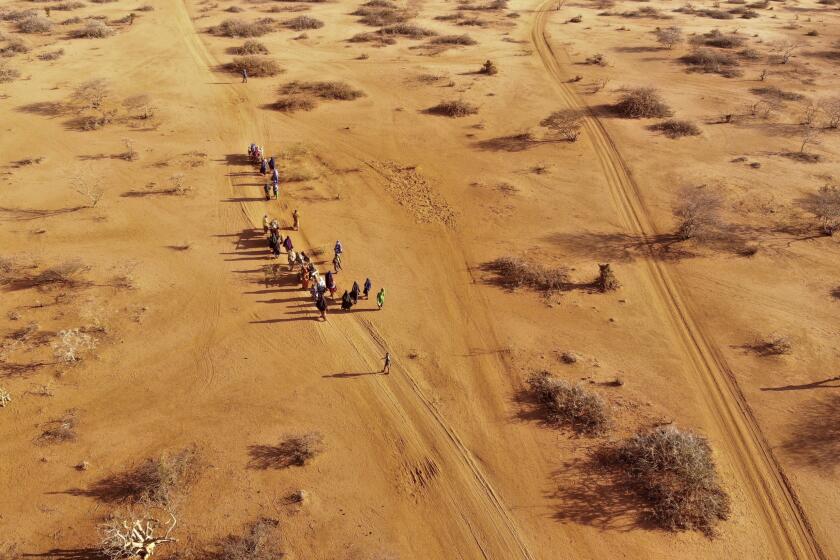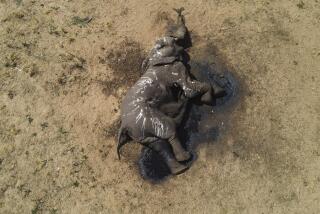In Kenya, lions are speared to death as human-wildlife conflict worsens amid drought
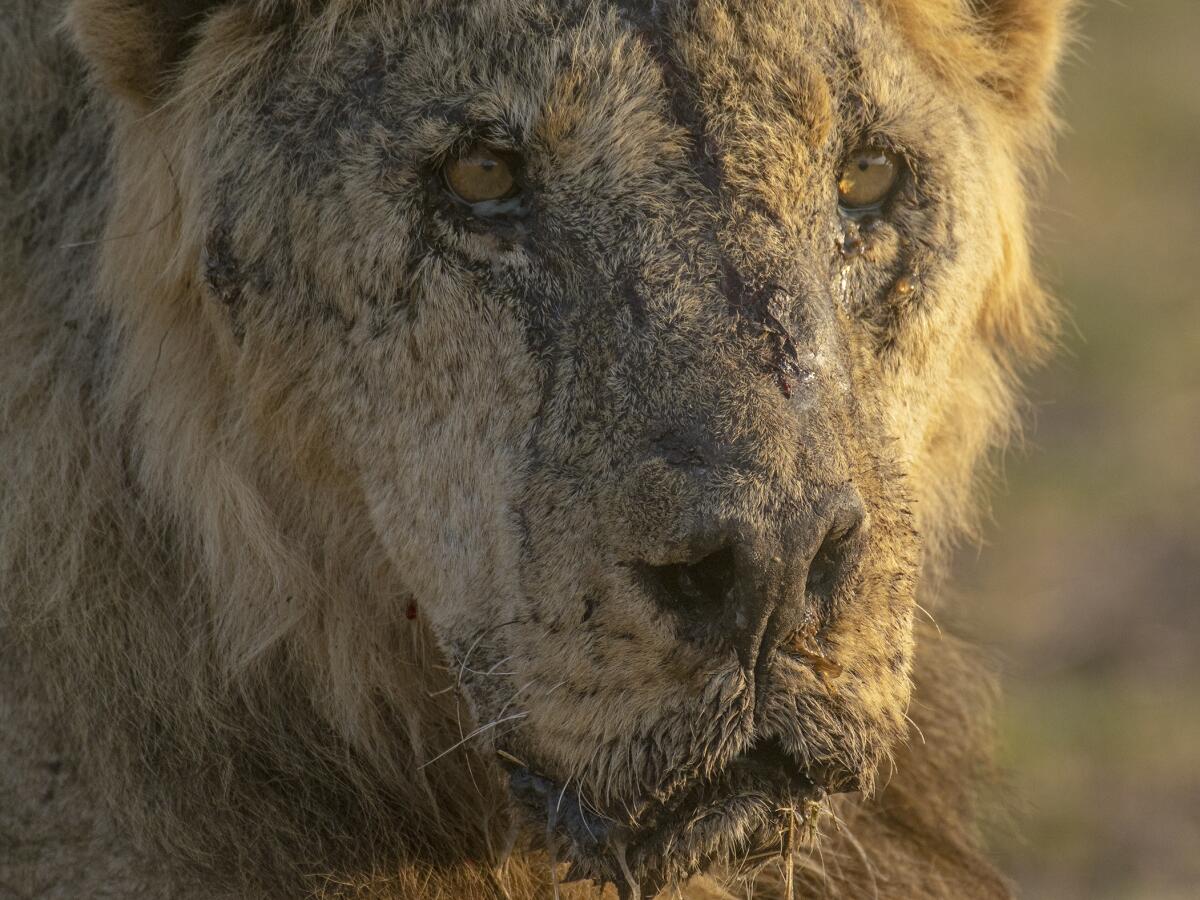
MBIRIKANI, Kenya — Parkeru Ntereka lost almost half of his goat herd to hungry lions that wandered into his pen located near Kenya’s iconic Amboseli National Park.
The herder’s loss made headlines in the east African country as it led to the spearing to death of six lions in retaliation by the Maasai people, who have coexisted with wild animals for centuries.
The killings highlighted the growing human-wildlife conflict in parts of east Africa that conservationists say has been exacerbated by a years-long drought.
At the same time, the predator population within the parks has increased. Hunger and thirst can send them into communities.
Ntereka said losing 12 goats is a huge loss for his large family.
“I sell these livestock in order to afford school fees. I don’t know how I will afford secondary school fees for some of my children,” said the 56-year-old father of eight.
The Big Life Foundation, which runs conservation programs in the area, has been offering compensation to herders who lose their livestock to predators.
A new report says hundreds of animals have died in Kenyan wildlife preserves during East Africa’s worst drought in decades.
But the compensation does not match the market rate for cows, goats and sheep.
“Cows are expensive and can cost as much as 80,000 Kenyan shillings ($577) each. One cannot compare 80,000 shillings to 30,000 shillings,” said herder Joel Kirimbu. “We receive very little compensation. That is why we become angry and despite receiving compensation, we come out and kill the lions.”
Rosi Lekimankusi, a mother of five, said 13 of her goats were killed by lions in the same village, Mbirikani in Kajiado County, just 93 miles from the capital, Nairobi.
“This is a big loss for us because my husband and I have no other jobs,” she said while standing outside her goat pen.
Her biggest fear is that such lion attacks will become even more common in her Maasai village that borders Amboseli National Park.
Africa’s national parks are increasingly threatened by below-average rainfall and new infrastructure projects.
The Big Life Foundation, which has run the compensation program for 20 years, said it cannot afford to pay the market price but asserted that the amount cannot be disregarded because it at least expresses solidarity with herders for their loss.
“It could be a little just to make sure your anger goes down but it’s better than nothing,” said Daniel Ole Sambu, who coordinates the foundation’s Predator Protection Program.
He said the foundation also gives the community scholarships for local children and support for medical facilities.
The human-wildlife conflict often makes headlines in Kenya, where tourism plays an important role in the economy.
Last month, one of Kenya’s oldest lions, Loonkiito, was speared to death as it wandered out of Amboseli in search of food.
A United Nations report says 43,000 people died amid the longest drought on record in Somalia last year, half of whom were probably children.
The Kenya Wildlife Service said it is working on lasting solutions that would address the conflict while protecting humans and wildlife.
Ntereka, the herder who lost almost half his goats, lives in fear of another lion attack.
“Since the olden days, we believed that when a lion invades your home and eats your cows, it will still return even after 10 years,” he said. “It will never forget that your home was once a source of food.”
More to Read
Sign up for Essential California
The most important California stories and recommendations in your inbox every morning.
You may occasionally receive promotional content from the Los Angeles Times.
